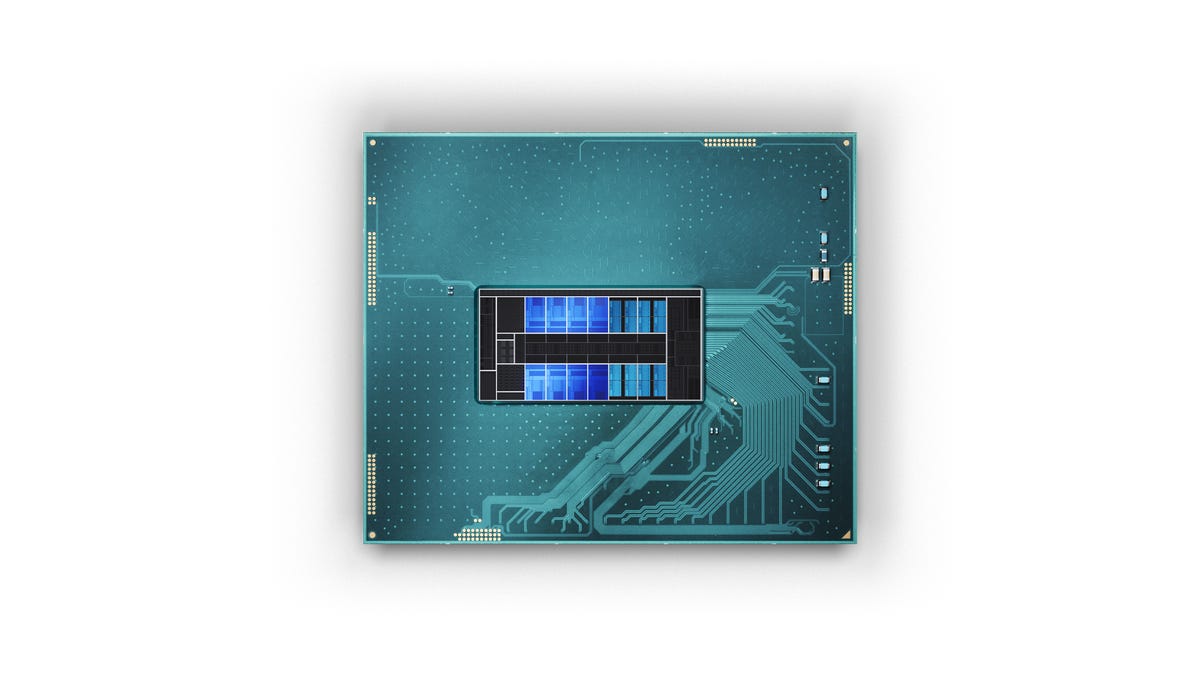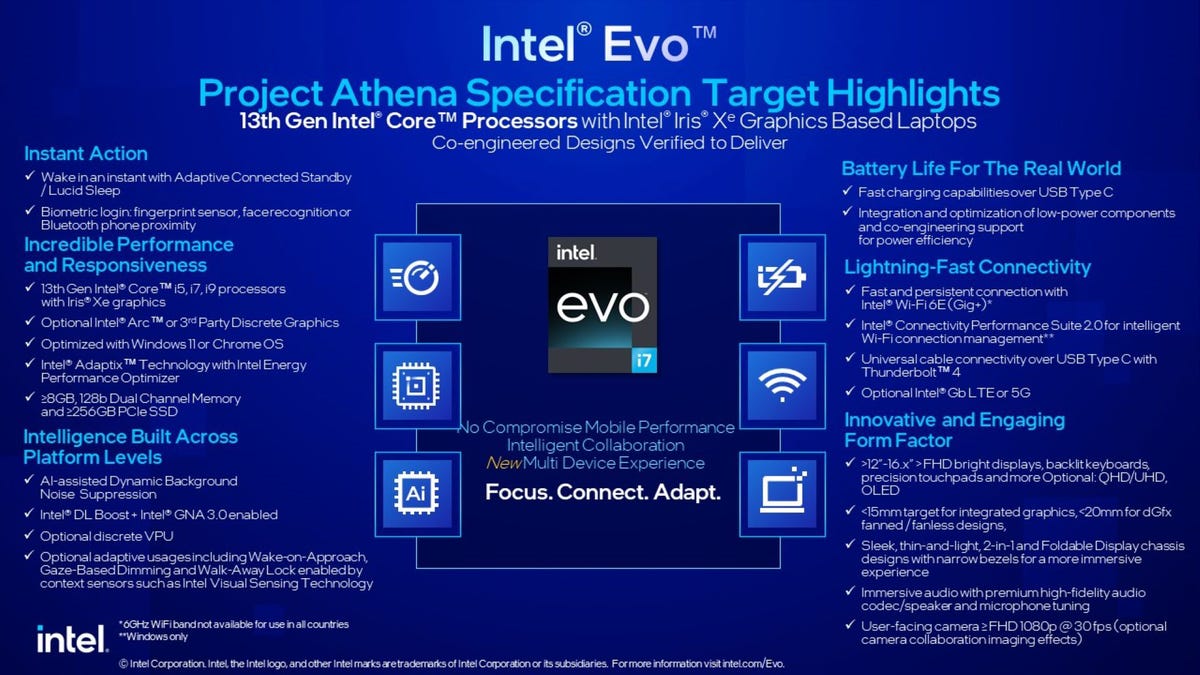
The 13th-gen HX-series processor module.
Intel
![]()
Welcome to CES, where Intel routinely drops a boatload of new processors. Periodically, we’ll also see some important capability upgrades to go with them as well. 2023 is one of the lower-key years, and after plowing through the details surrounding all 40-plus new choices, I’ve concluded that Intel’s latest 13th-gen announcements can be pretty much summed up in five key points.
Read more: CES 2023 Live Blog: LG Shows Off First Wireless OLED TV, Fridge With LED Doors
Only a few laptop CPUs promise significant speed gains
That’s because the Core i9-13980HX, i9-13950HX, i9-13900HX and i7-13850HX — the premium CPUs intended for gaming and CPU-intensive graphics (like rendering) — have double the efficient cores (E cores) to hit a total of up to 24 cores and support faster DDR5 memory than 12th-gen offerings. The rest just have tweaks and optimizations, which allow for a gentle bump in clock speeds and battery life. For Chromebooks, the Core i3 N series updates to the latest hybrid P core/E core architecture, which means you may experience notable performance improvements in higher end Chromebooks as well.
You’ll be able to overclock with any of the HX processors, which you were previously only able to do with the HK versions. All SKUs shown support CPU, GPU, and memory overclocking. Intel’s Iris Xe integrated graphics will also be able to take advantage of a new Endurance Gaming setting, intended to extend battery life while gaming. It does this by kicking in Intel’s XeSS upscaling and capping the frame rate at 30fps, for all your desperation gaming needs.
The company highlighted laptops from the usual suspects — Acer, Dell, HP, Lenovo, MSI, Asus and Razer — as partners for 13th-gen HX series laptops.
You’ll likely see a quick jump to 13th-gen based offerings
The new laptop CPUs and supporting chipsets can generally drop right into the existing motherboards and have the same power and cooling requirements. It’s always a faster manufacturing switchover when companies don’t need to significantly redesign the hardware.

 Enlarge Image
Enlarge Image
Intel
Desktops toddle on
Intel launched its flagship 13th-gen desktop CPUs in September, leaving the mainstream, low power (for all-in-ones and other compact desktops) and inexpensive chips for CES, as it usually does. They’re not terribly interesting, since they, too tend to be variations on last year’s theme. One bright spot is that Intel’s bringing Bluetooth LE audio to desktops via motherboards which use its Killer Wireless modules.
Read more: Best Desktop PCs
Evo expands beyond Intel graphics
Intel’s Evo program is its marketing imprimatur for laptops which meet specific criteria that highlights all the wunnerful things you can get when you put Intel inside. These types of programs — AMD Advantage is another — usually require that the laptops incorporate all the latest and greatest hardware the sponsoring company makes. So it’s notable that Intel now allows laptops with third-party discrete graphics (in other words, Nvidia and AMD) to qualify, in addition to its own Arc graphics. Also, with noting: Of the laptops launching at CES, I don’t remember any incorporating Intel Arc discrete graphics that I heard about prior to the show.
Previously announced features will begin to roll out
The 13th-gen Core chips support the current 40Gbps Thunderbolt 4 data transfer technology, as did the 12th-gen processors, but with some improvements on the laptop processors that aren’t on the desktop equivalents. First, they support DisplayPort 2.1 video for running dual 4K monitors at 60 frames per second, and second, their USB speeds are doubled to 20Gbps. (The latest version of that technology, USB 4, will reach 80Gbps and 120Gbps in some conditions when it arrives as soon as this year.)
Other features include Intel’s Unison, which lets iPhone or Android devices send and receive texts, view and transfer photos, videos and files and more with your PC or laptop. We’ll also see the Engineered for Evo compatibility program expanding to Bluetooth mice, keyboards and Wi-Fi access points, and Intel’s addition of Bluetooth LE Audio (for better, less battery sucking headphone operation) to its Killer Wireless modules. Some laptops will also start to incorporate Intel’s Movidius vision processing unit, which Windows can use for improving videoconferencing experiences.
You can expect a lot more laptop, desktop and component PC news at CES 2023, much of it built around these Intel chip announcements.
The best laptops in every category
- Best Laptop for 2023
- Best Windows Laptops
- Best Laptop for College
- Best Laptop for High School Students
- Best Budget Laptop Under $500
- Best Dell Laptops
- Best 15-Inch Work and Gaming Laptops
- Best 2-in-1 Laptop
- Best HP Laptops
- Best Gaming Laptop
- Best Cheap Gaming Laptop Under $1,000
- Best Chromebook: 8 Chromebooks Starting at Under $300
